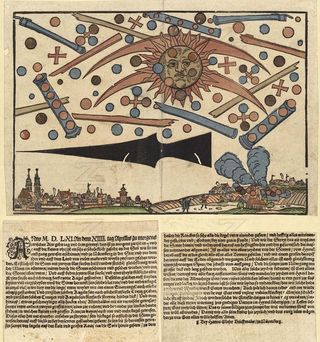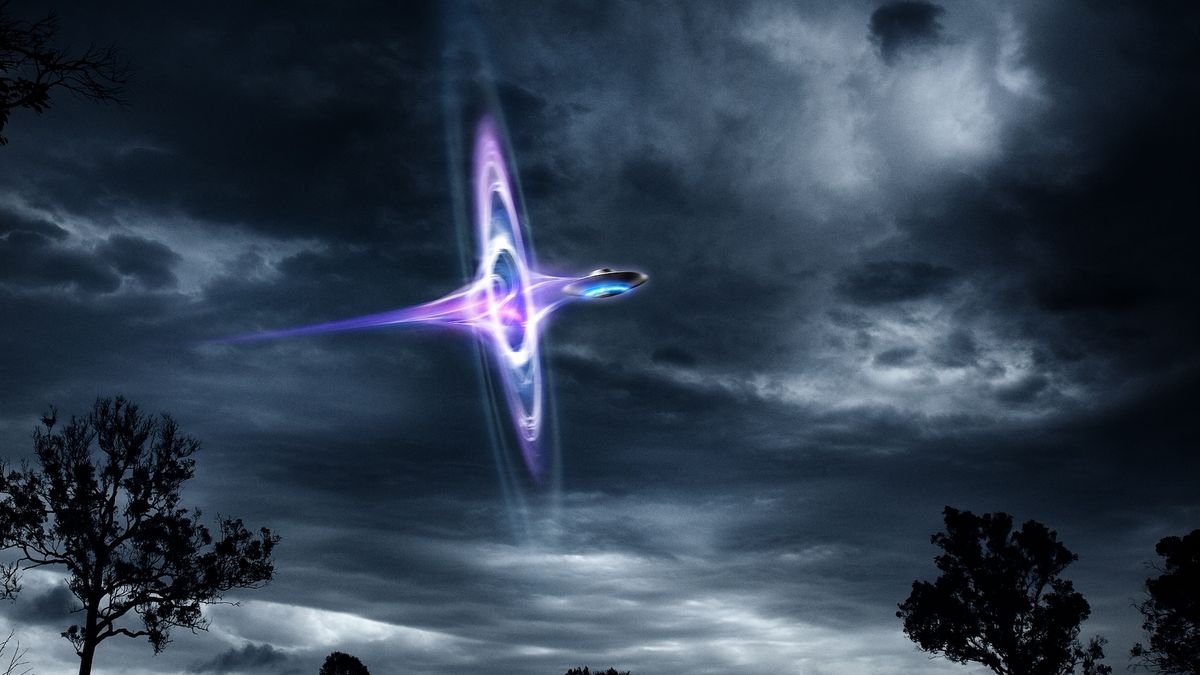Every so often, claims of UFO sightings go viral and even spur serious research. But humans have been gazing at the sky for millennia, and reports of such sightings go way back. So what was the first recorded UFO sighting, and did it predate the mid-20th century, when reports of UFOs became more commonplace?
Unfortunately, the answer isn’t clear-cut, at least when looking at pre-modern examples.
“There is no consensus on what constitutes the first recorded UFO sighting in history,” Chris Aubeck, an independent researcher and director of the Magonia Exchange, an international UFO history archival project with members in 15 countries, told Live Science. This dispute is not due to a lack of accounts; many artifacts portray puzzling, celestial objects.
“There’s no question that human beings have depicted or reported or chronicled things about strange, anomalous things in the sky dating back to the ancient world,” Greg Eghigian, a professor of history and bioethics at Penn State, told Live Science.
Related: How would we give aliens directions to Earth?
Rather, the context and form of these accounts make it difficult to pinpoint what can be definitively described as the first recorded UFO sighting. For example, according to Aubeck, ancient texts like Sumerian and Babylonian cuneiform tablets, like those in the Šumma ālu series and other divination texts from the second and first millennia B.C., provide the first known recordings of potential UFO sightings, though these are interpreted as omens. These accounts describe changing shapes in the sky and black meteors, which, at the time, were regarded as religious harbingers. However, these texts lack visual depictions or illustrations.
“I can’t put a lot of stock in those stories because they’re completely decontextualized from the society in which they’re made,” Eghigian said. These accounts may not be claims of extraterrestrials visiting Earth, but rather religious scriptures or written stories. In these cases, it can be difficult to separate cultural lore from an individual’s attempt to describe a sight they could not explain, from comets to lenticular clouds.
In one example, residents of Nuremberg, Germany reported a strange aerial battle on April 14, 1561. They wrote about seeing orbs, crosses, cylinders, and a giant, mysterious black arrow-shaped object, which crash-landed in the distance. According to Hans Glaser, a local artist who made a woodcut depicting the event, the different objects in the sky “all started to fight among themselves” until “they became fatigued … fell from the sun down upon the earth ‘as if they all burned’ and they then wasted away on the earth with immense smoke.” However, he didn’t mention UFOs, only writing that “Whatever such signs mean, God alone knows.”
Because their interpretation isn’t clear, these bygone examples aren’t necessarily claims of a UFO sighting. What’s more, although humans commonly believed in alien civilizations for centuries, “what was not common was to say aliens were visiting us,” Eghigian said.

For Eghigian, the first definitive recorded “UFO sighting” was relatively recent. In June 1947, amateur pilot Kenneth Arnold was flying his plane around Mount Rainier in Washington in search of a crashed cargo plane, when he saw nine objects flying in formation at high speeds. According to Eghigian, Arnold suspected these were military aircraft that the public wasn’t supposed to know about. He took this sighting to the local newspaper.
One reporter asked about how the aircraft moved, and Arnold described it as a saucer skipped across the water. This reporter turned that description into “flying saucer.” The following summer, many more people reported sightings of flying saucers. In this way, the Arnold sighting kicked off modern UFO culture as we know it.
Aubeck agreed that this sighting “is widely regarded as the event that kick-started modern UFO culture.”
Still, Eghigian said the public didn’t immediately point to extraterrestrials in the mid-20th century. Instead, they suggested it was either the U.S. or Soviet military. This theme of paranoia and suspicion of other humans extends back to previous sightings. Eghigian said there were a number of dirigible sightings in England in 1912 and 1914, and civilians suspected the Germans.
Ultimately, understanding the history of UFO sightings helps us understand human storytelling. “Studying UFO sightings is valuable because they represent the urban legends of our time,” Aubeck said. “They allow us to examine the interplay between human imagination and observation, helping us understand how cultural narratives shape our perceptions of unexplained phenomena.”


